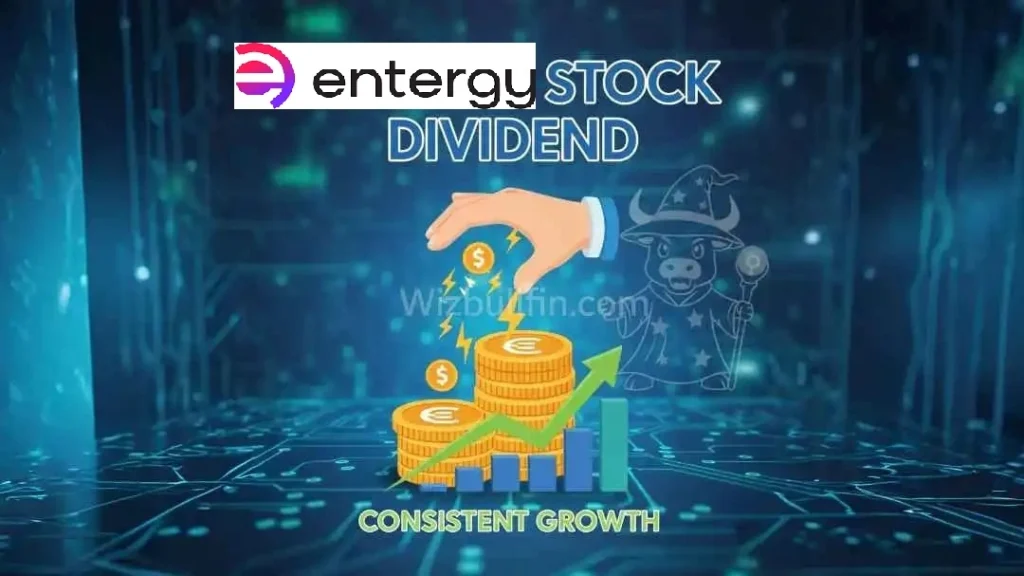Entergy stock stands out as a strong choice for income-focused investors, backed by its steady dividend history and proven resilience in the utility sector. Growing interest in Entergy stock price, dividend payouts, and forecasts for 2025 highlights the company’s position as a utility giant that investors continue to watch closely. For those in the utilities sector, the priorities are clear: stability and reliable income—and Entergy Corporation (NYSE: ETR), a Fortune 500 company based in New Orleans, has consistently delivered on both fronts.
With nearly 12,000 employees and a customer base spanning Arkansas, Louisiana, Mississippi, and Texas, Entergy provides electricity to about 3 million customers, making it one of the largest regulated utilities in the United States.
In this article, we’ll explore Entergy stock’s dividend performance, its stock split history, and how the company’s valuation measures compare to the broader market. We’ll also examine its recent financial highlights and what they mean for dividend-focused investors.

Table of Contents
Entergy’s Dividend History
Entergy has a reputation for being a dependable dividend-paying stock. The company currently offers an annual dividend yield of 2.71%, translating to an annual payout of $2.40 per share, or $0.60 per share quarterly.
This payout is attractive for investors seeking consistent income from a defensive sector like utilities. Over the years, Entergy has gradually increased its dividend, reflecting steady earnings growth and management’s commitment to returning capital to shareholders.
While utilities are not known for high dividend growth, Entergy has maintained a prudent balance—ensuring shareholders benefit while retaining enough earnings to fund infrastructure investments and energy system improvements.
The company’s board also recently declared a dividend payment of $0.3359375 per share on its Series A Preferred Stock, payable on October 15, 2025, to shareholders of record as of October 3, 2025.
Dividend Yield in Context
At 2.71%, Entergy’s dividend yield sits comfortably in line with industry averages. For comparison, many U.S. utility companies range between 2% and 4%.
While this yield isn’t as high as some high-dividend stocks, the stability of Entergy’s regulated revenue model and its proven record of dividend payments make it a strong candidate for income-seeking investors.
The payout ratio also appears sustainable, given the company’s trailing twelve-month (ttm) net income of $1.76 billion and diluted EPS of $4.03.
Entergy Stock Split History
Unlike some companies that frequently split their shares to improve affordability and liquidity, Entergy has a conservative history with stock splits. The company’s last stock split was several decades ago.
It has since focused on steady growth in earnings and dividends rather than adjusting share price through splits. This conservative approach reflects the utility sector’s overall preference for stability rather than aggressive shareholder tactics.
Investors should not expect frequent stock splits from Entergy but can rely on steady dividend income.
Recent Stock Performance
Entergy’s recent returns highlight its resilience. As of September 19, 2025, Entergy delivered a year-to-date (YTD) return of 19.45%, outpacing the S&P 500’s 13.31%.
On a one-year basis, Entergy posted a return of 43.01%, more than double the S&P 500’s 16.64%. Over the three-year period, ETR returned 71.56%, nearly identical to the index’s 70.89%.
Over five years it delivered 123.93%, outperforming the S&P 500’s 100.77%. These figures highlight that Entergy has been more than just a defensive income stock.
It has also provided competitive total returns, bolstered by both share price appreciation and dividends.
Valuation Measures
Entergy’s market cap as of September 2025 stands at $39.58 billion, with an enterprise value of $68.81 billion. The company trades at a trailing P/E ratio of 22.00 and a forward P/E of 20.33.
While these multiples are slightly higher than some peers, they reflect the market’s confidence in Entergy’s earnings growth and dividend reliability. The PEG ratio (5-year expected) of 1.35 suggests moderate growth at a reasonable valuation.
Other valuation metrics reinforce Entergy’s solid position. Price/Sales (ttm): 3.16, Price/Book (mrq): 2.44, EV/Revenue: 5.59, and EV/EBITDA: 11.34 all align with the utility sector’s tendency toward steady earnings and modest growth.
Financial Highlights
Profitability remains strong, with a 14.30% net margin, 11.20% return on equity (ROE), and 3.20% return on assets (ROA). The company generated $12.31 billion in revenue over the trailing twelve months.
It maintains a healthy earnings base with net income of $1.76 billion. On the balance sheet side, Entergy holds $1.18 billion in cash but carries a relatively high debt-to-equity ratio of 183.96%.
This leverage is common in capital-intensive utility businesses, where companies invest heavily in infrastructure and grid modernization. Entergy offsets this with stable cash flows, making its dividend secure despite the higher leverage.
Strategic Investments and Growth Outlook
Entergy continues to invest in modern natural gas, nuclear, and renewable energy sources to strengthen its grid reliability and sustainability profile. Its integration with the Midcontinent Independent System Operator Inc. (MISO) grid enhances its ability to manage costs and efficiency across multiple states.
Beyond financial metrics, Entergy’s community investment is also notable. Since Hurricane Katrina, the company and its shareholders have contributed nearly $95 million in philanthropic support, while employees have donated 1.6 million hours of volunteer service.
Such commitments underscore Entergy’s role not only as a dividend-paying stock but also as a responsible corporate citizen.
Final Thoughts: Entergy as a Dividend Play
For investors interested in dividend stocks with a balance of income and growth, Entergy Corporation checks the boxes. With a 2.71% yield, consistent quarterly payments of $0.60 per share, and a strong track record of long-term shareholder returns, Entergy represents both reliability and resilience in the utilities sector.
While the company carries significant debt, its stable cash flows, regulated earnings base, and community-oriented strategy make it a strong long-term holding. Add in competitive stock performance and measured growth in cleaner energy, and Entergy remains an attractive option for dividend-focused investors looking to balance safety with steady upside potential.
